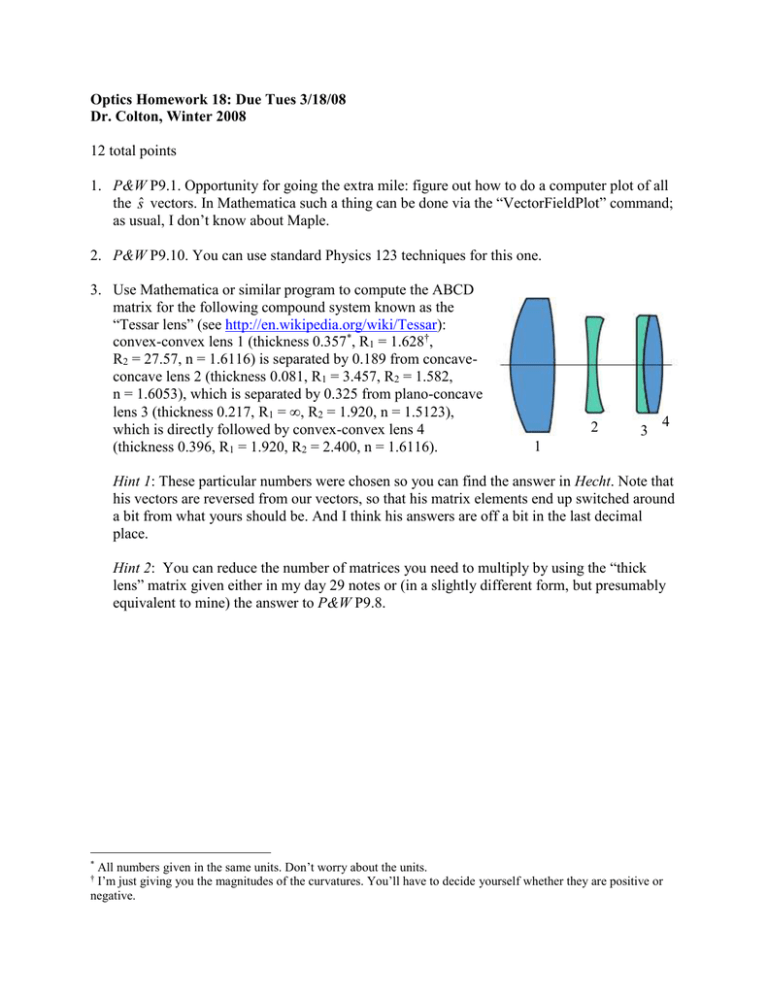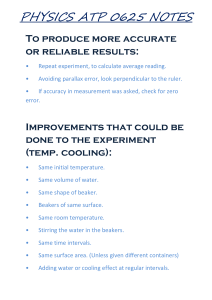hw 18.doc
advertisement

Optics Homework 18: Due Tues 3/18/08 Dr. Colton, Winter 2008 12 total points 1. P&W P9.1. Opportunity for going the extra mile: figure out how to do a computer plot of all the ŝ vectors. In Mathematica such a thing can be done via the “VectorFieldPlot” command; as usual, I don’t know about Maple. 2. P&W P9.10. You can use standard Physics 123 techniques for this one. 3. Use Mathematica or similar program to compute the ABCD matrix for the following compound system known as the “Tessar lens” (see http://en.wikipedia.org/wiki/Tessar): convex-convex lens 1 (thickness 0.357*, R1 = 1.628†, R2 = 27.57, n = 1.6116) is separated by 0.189 from concaveconcave lens 2 (thickness 0.081, R1 = 3.457, R2 = 1.582, n = 1.6053), which is separated by 0.325 from plano-concave lens 3 (thickness 0.217, R1 = , R2 = 1.920, n = 1.5123), which is directly followed by convex-convex lens 4 (thickness 0.396, R1 = 1.920, R2 = 2.400, n = 1.6116). 2 3 4 1 Hint 1: These particular numbers were chosen so you can find the answer in Hecht. Note that his vectors are reversed from our vectors, so that his matrix elements end up switched around a bit from what yours should be. And I think his answers are off a bit in the last decimal place. Hint 2: You can reduce the number of matrices you need to multiply by using the “thick lens” matrix given either in my day 29 notes or (in a slightly different form, but presumably equivalent to mine) the answer to P&W P9.8. All numbers given in the same units. Don’t worry about the units. I’m just giving you the magnitudes of the curvatures. You’ll have to decide yourself whether they are positive or negative. * †






